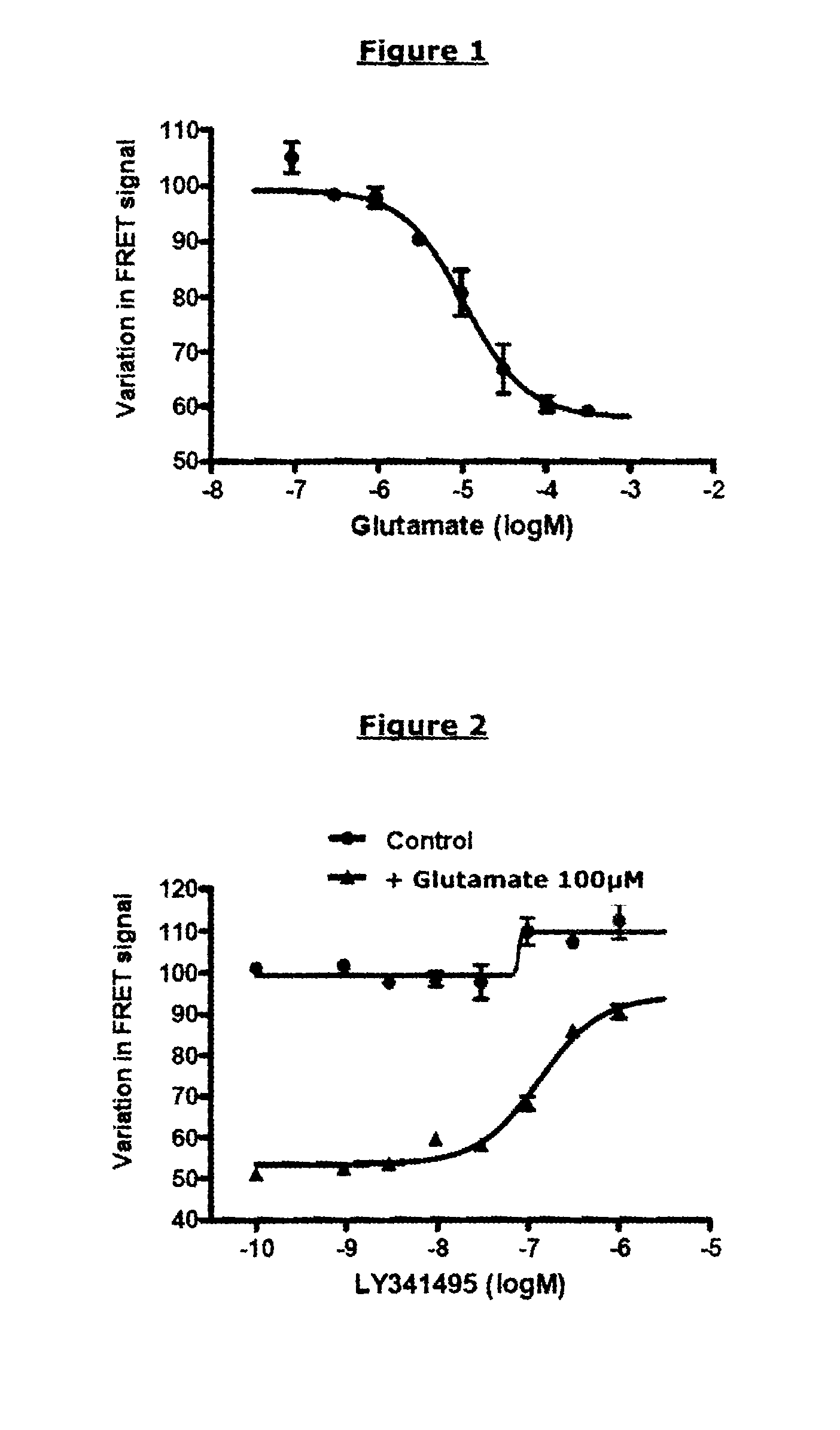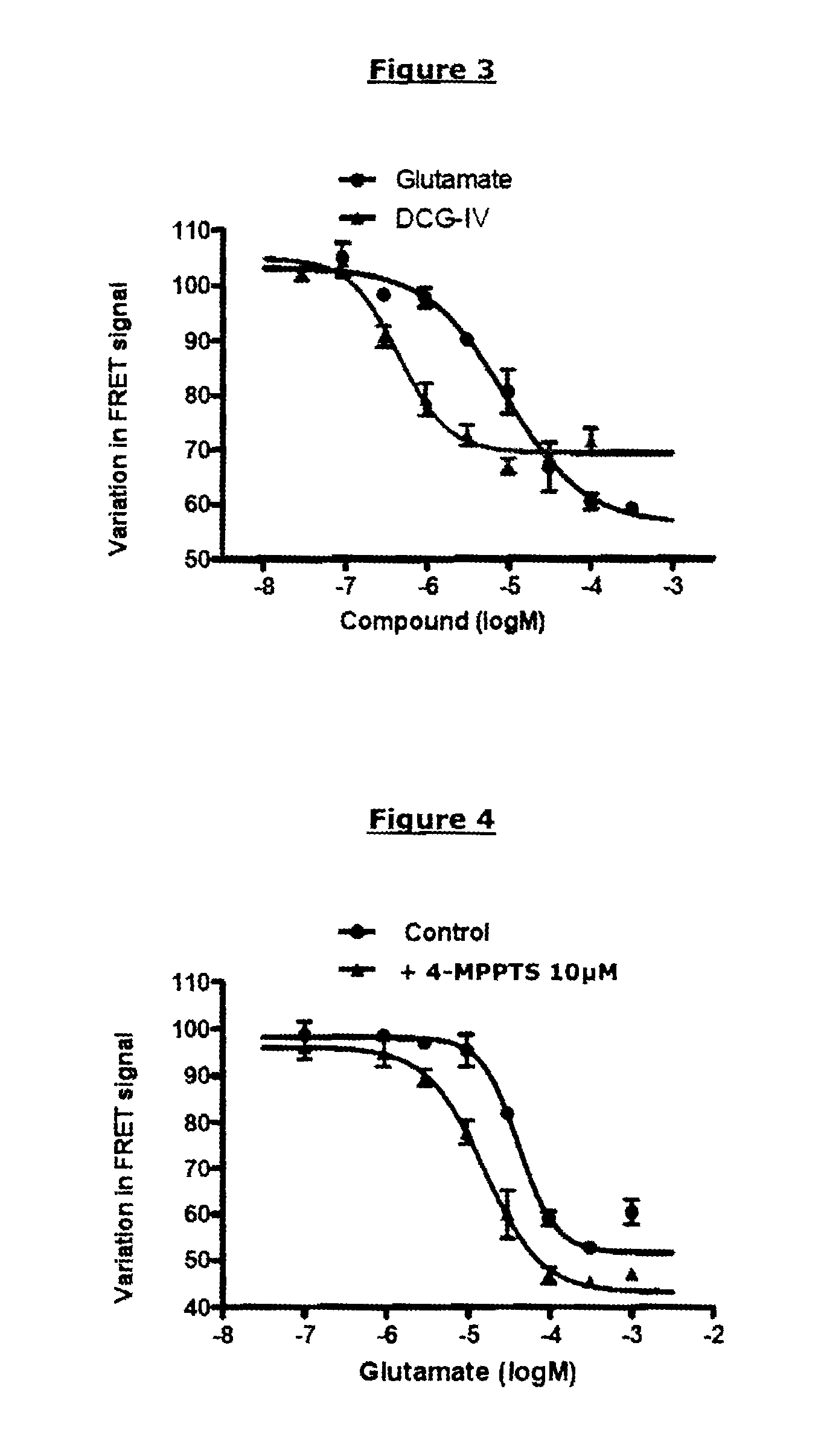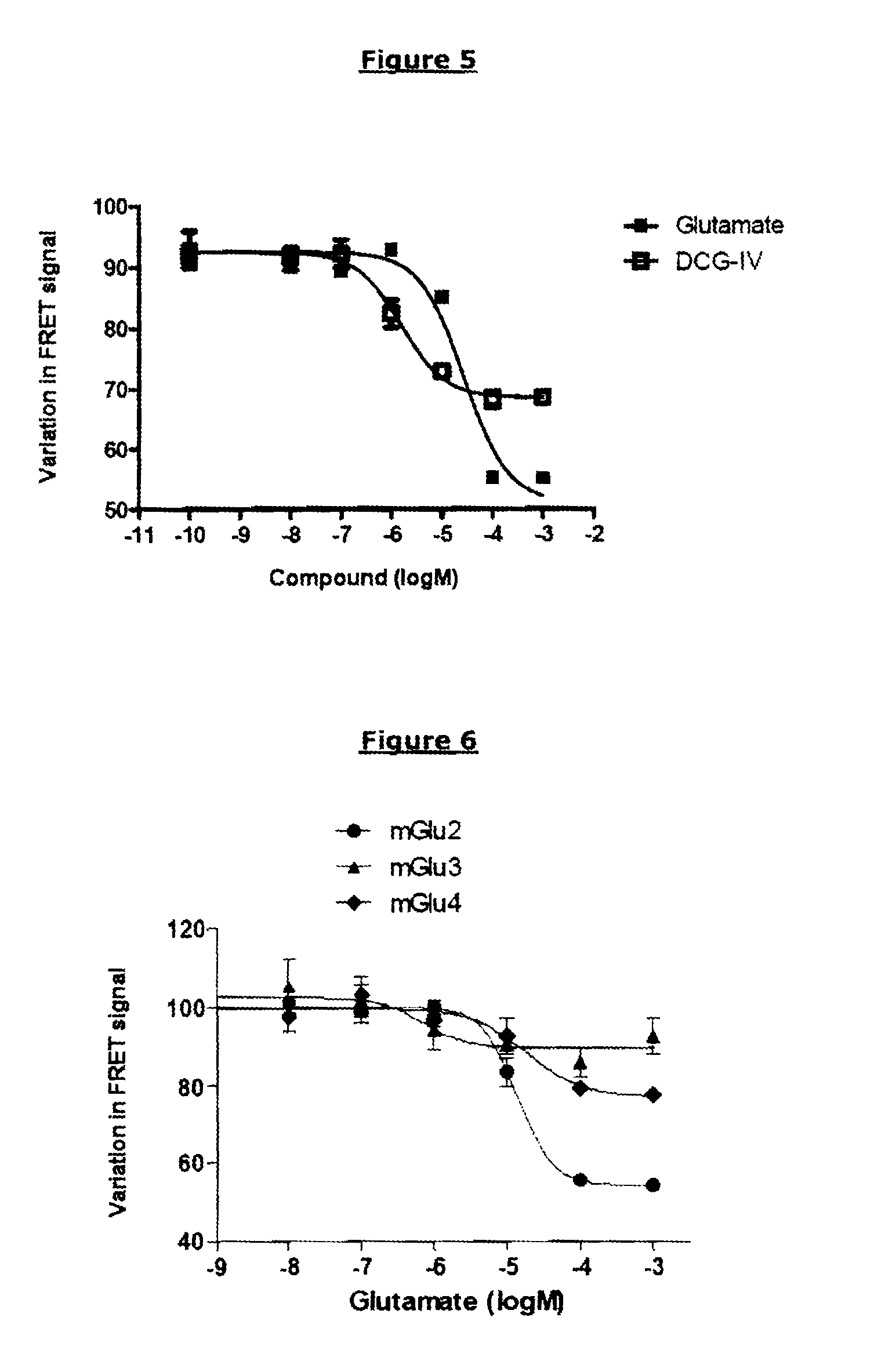Method for detecting compounds modulating dimers of vft domain membrane proteins
a technology of vft domain and dimer, which is applied in the field of compound modulating membrane receptors, can solve the problems of inability to use screening methods on a large scale, poor suitability of existing techniques for demonstrating compounds capable of modulating the activation of dimeric class c gpcrs, and difficult detection of agonist effects
- Summary
- Abstract
- Description
- Claims
- Application Information
AI Technical Summary
Problems solved by technology
Method used
Image
Examples
example 1
Demonstration of an Activating Compound having an Agonist Effect on an mGluR2-mGluR2 Dimer (R0 of the Pair of FRET Partners Used: 48 Å) Protocol:
[0217]Transfection by Electroporation:
[0218]Cos-7 cells were cultured in complete medium at 37° C. and 5% CO2. At confluence, they were washed once with PBS, and detached with a trypsin-EDTA solution for 10 min at 37° C. A suspension of 10 million cells was mixed with 5 μg of total DNA (3.5 μg of prK5 plasmid, 1.2 μg of prK5 Flag-Cliptag-mGluR2 plasmid and 0.3 μg of prK5 HA-Snaptag-mGluR2 plasmid), in a final volume of 300 μl of electroporation buffer, and were then subjected to an electric shock of 280 V, 900 μF using a Gene-Pulser II electroporator (BIO-RAD), in 4 mm electroporation cuvettes (Eurogentec). The cells were then seeded into a 96-well plate (Greiner CellStar 96-well plate), at 150 000 cells per well, in a final volume of 100 pl per well of complete medium, and then incubated for 24 hours.
[0219]Labeling
[0220]24 hours after tran...
example 2
Demonstration of a Deactivating Compound having a Competitive Antagonist Effect on an mGluR2-mGluR2 Dimer (R0 of the Pair of FRET Partners Used: 48 Å)
[0231]Reagents and Plasmids
[0232]The same reagents and plasmids as those described in example 1 were used. The known antagonist compound LY341495 (Tocris Bioscience) was used.
[0233]Protocol
[0234]The same protocol as that described in example 1 was used. The final concentrations were [Glutamate]=100 μM in all the wells and [LY341495]=1000 nM; 316 nM; 100 nM; 31.6 nM; 10 nM; 3.16 nM; or 1 nM.
[0235]Results
[0236]FIG. 2 represents the TRF520 signal as a function of the concentration of LY341495 antagonist and in the presence of a constant concentration of glutamate (control curve: in the absence of glutamate).
[0237]In the presence of glutamate and in the absence of the competitive antagonist LY341495, the receptor is activated, and a variation in TRF520 of 50% is observed. The presence of antagonist prevents this action of glutamate on the ...
example 3
Demonstration of an Activating Compound having a Partial Agonist Effect on an mGluR2-mGluR2 Dimer (R0 of the Pair of FRET Partners Used: 48 Å)
[0239]Reagents and Plasmids
[0240]The same reagents and plasmids as those described in example 1 were used. The known partial agonist compound used was DCG-IV (Tocris Bioscience); it was compared with the reference complete agonist, glutamate.
[0241]Protocol
[0242]The protocol of example 1 was used. The final concentrations of [DCG-IV] were the following: 100 μM; 31.6 μM; 10 μM; 3.16 μM; 1 μM; 0.316 μM; or 0.1 μM.
[0243]Results
[0244]FIG. 3 represents the TRF520 signal as a function of the concentration of glutamate (complete agonist) or of DCG-IV (partial agonist).
[0245]Like glutamate, DCG-IV is capable of inhibiting the TRF520 signal in a dose-dependent manner. The concentration necessary for obtaining a variation equal to half the maximum variation is close to the pharmacological EC50 of DCG-IV (0.4 μM). Nevertheless, the maximum variation obtai...
PUM
 Login to View More
Login to View More Abstract
Description
Claims
Application Information
 Login to View More
Login to View More - R&D
- Intellectual Property
- Life Sciences
- Materials
- Tech Scout
- Unparalleled Data Quality
- Higher Quality Content
- 60% Fewer Hallucinations
Browse by: Latest US Patents, China's latest patents, Technical Efficacy Thesaurus, Application Domain, Technology Topic, Popular Technical Reports.
© 2025 PatSnap. All rights reserved.Legal|Privacy policy|Modern Slavery Act Transparency Statement|Sitemap|About US| Contact US: help@patsnap.com



